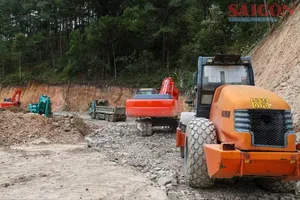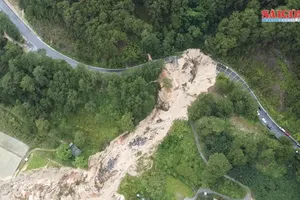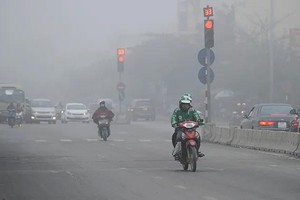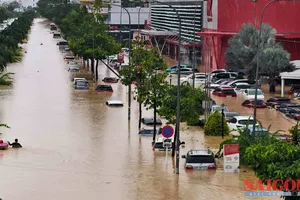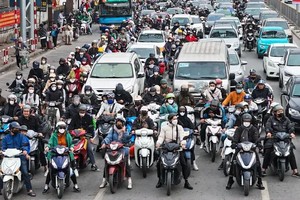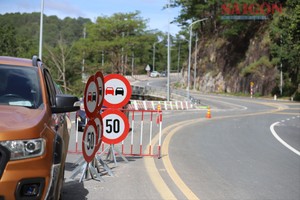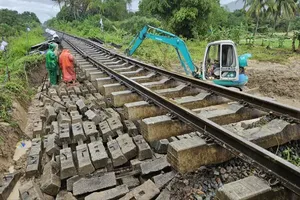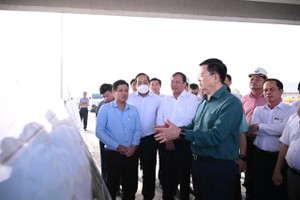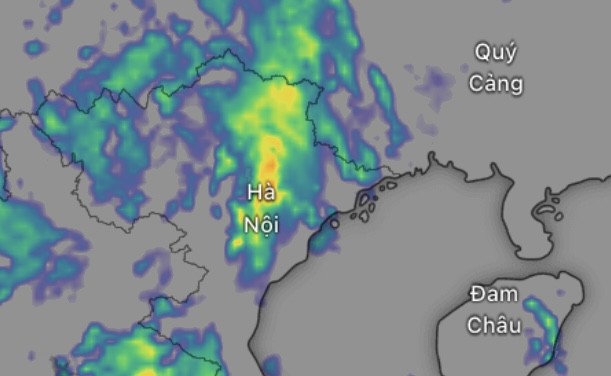
The downpour, accompanied by continuous thunder and lightning, began late on October 6 and persisted into the following morning. Many residents left home as early as 3 or 4 a.m. to avoid rush-hour gridlock, while streets from the city center to the suburbs were left inundated. By 7 a.m., the skies remained dark and the rain showed no sign of letting up.
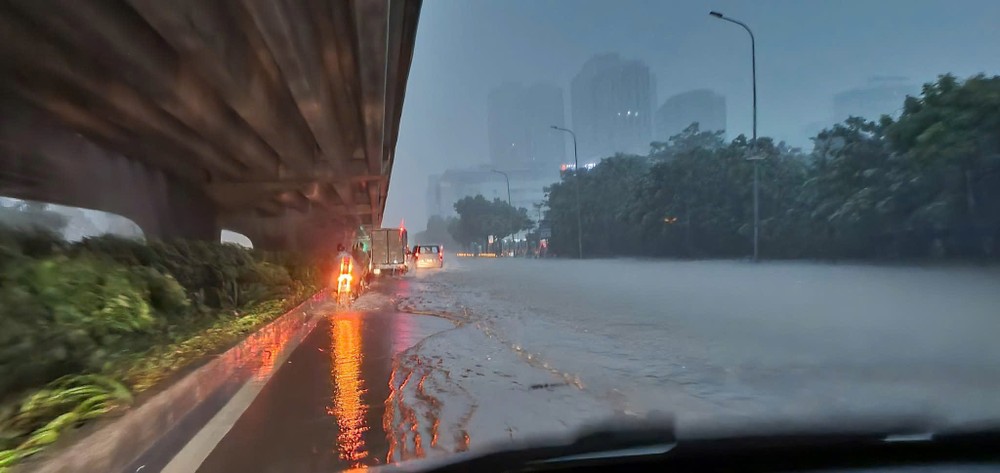
According to the National Center for Hydro-Meteorological Forecasting, rainfall in Hanoi reached 50–100 millimeters over six hours, with some stations recording extreme levels — 157.2 millimeters in Soc Son and 100.2 millimeters in Me Tri. The center forecast that moderate to heavy rain, with localized torrential downpours of up to 150 millimeters, would continue over the next several hours before tapering off by evening.
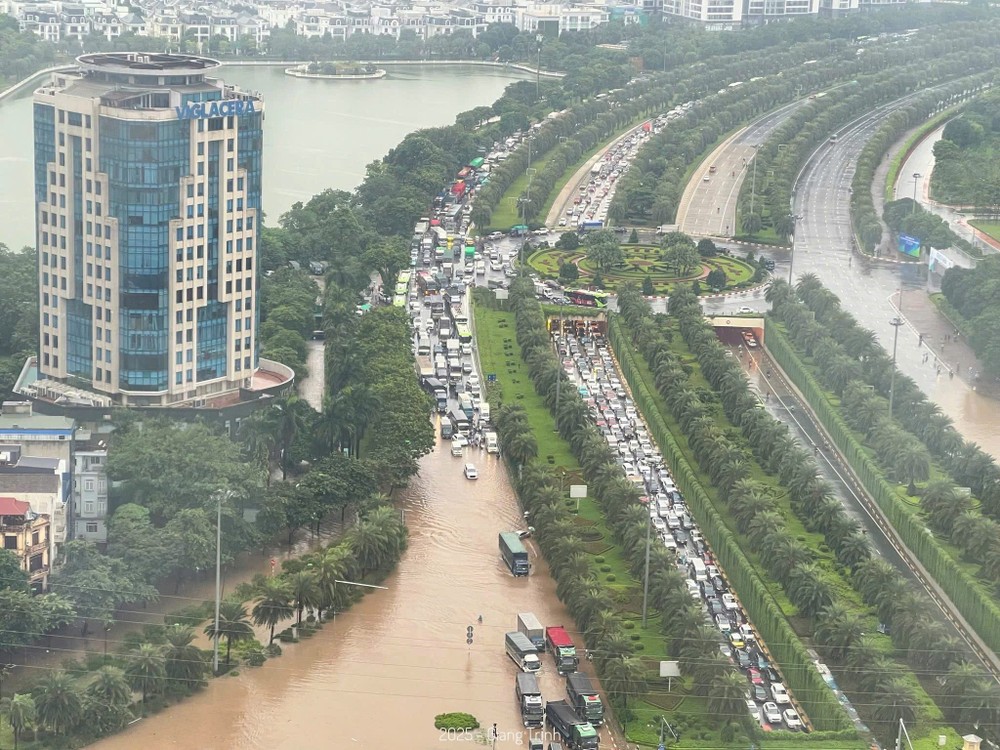
Authorities warned of serious flooding in low-lying inner wards, with water depths of 0.2–0.4 meters expected on numerous streets, including Tran Vu, Lieu Giai, Nguyen Huu Huan, Le Duan, and To Huu. Flooding could persist from one to three hours or longer in certain areas.
The deluge also forced several industrial zones in Hanoi — including Thach That, Quang Minh, and Dong Anh — to suspend operations as hundreds of workers were unable to reach factories due to submerged roads. “From early morning, many labor unions reported that workers were stranded by flooding,” said Mr. Nguyen Dinh Thang, Chairman of the Trade Union of Hanoi’s Industrial and Hi-Tech Parks. Some companies proactively granted employees leave to ensure safety.
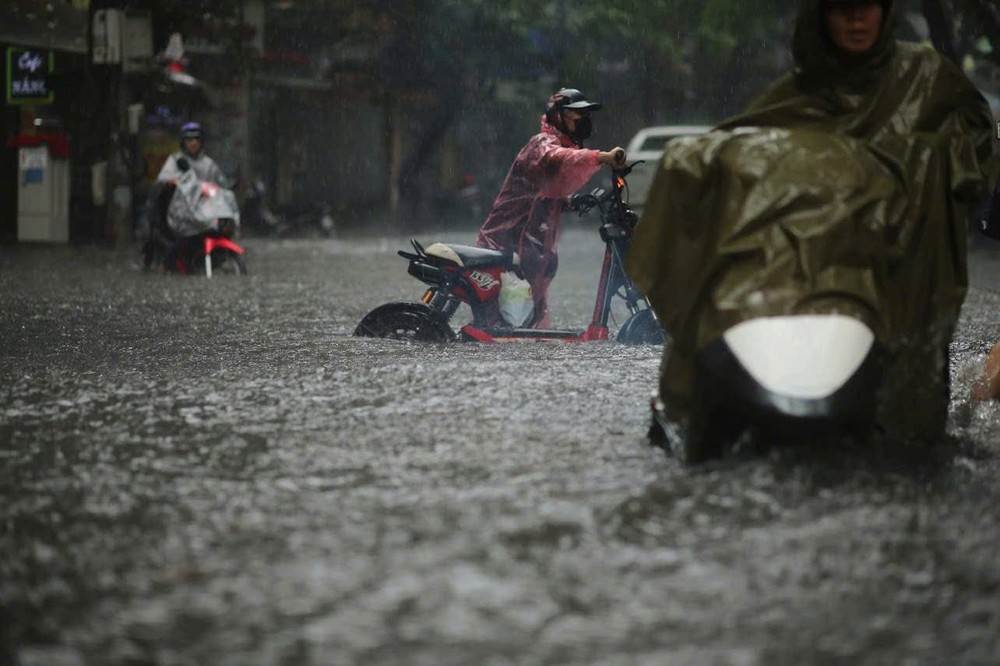
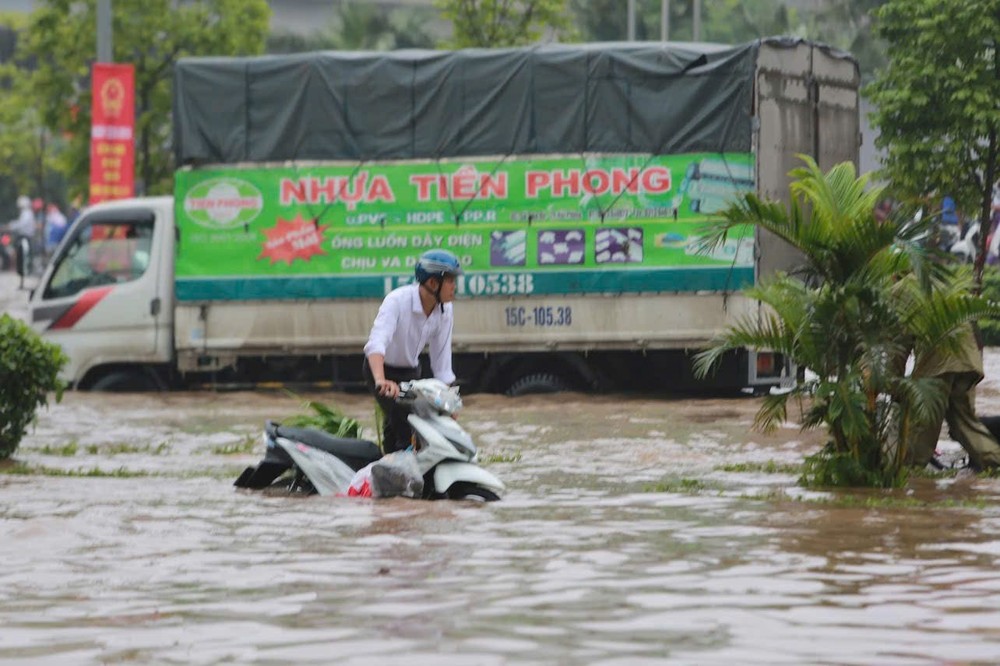
At Channel Well Technology Vietnam Co., the enterprise allowed about 400 workers to stay home on October 7 to avoid travel risks in flooded zones, with plans to reschedule shifts once conditions improve. The Hanoi Labor Confederation also postponed its scheduled meeting that morning due to severe weather.
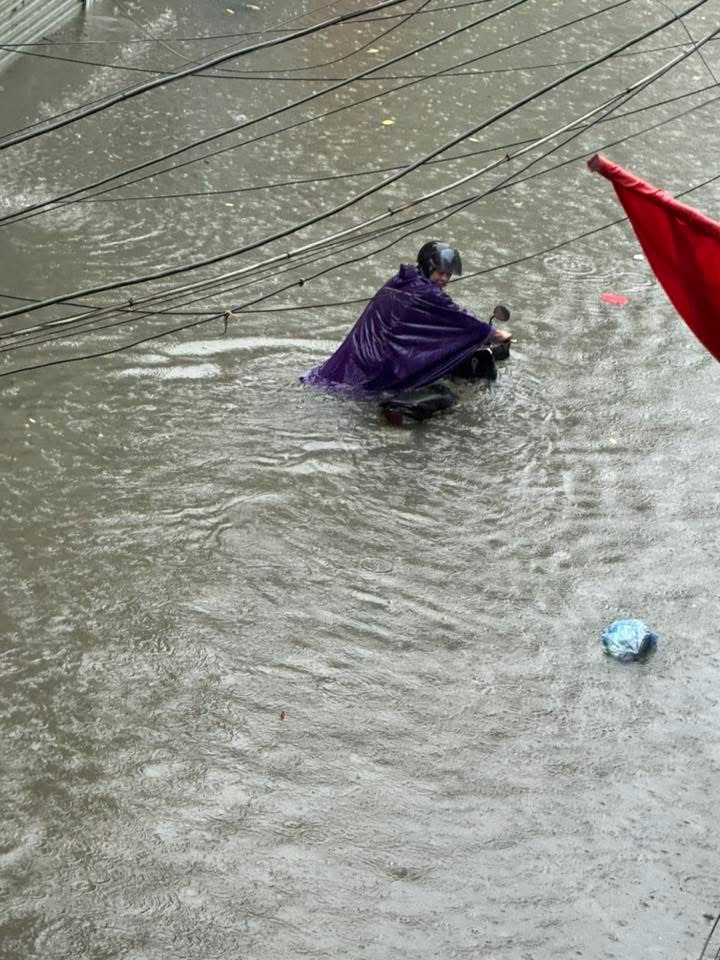
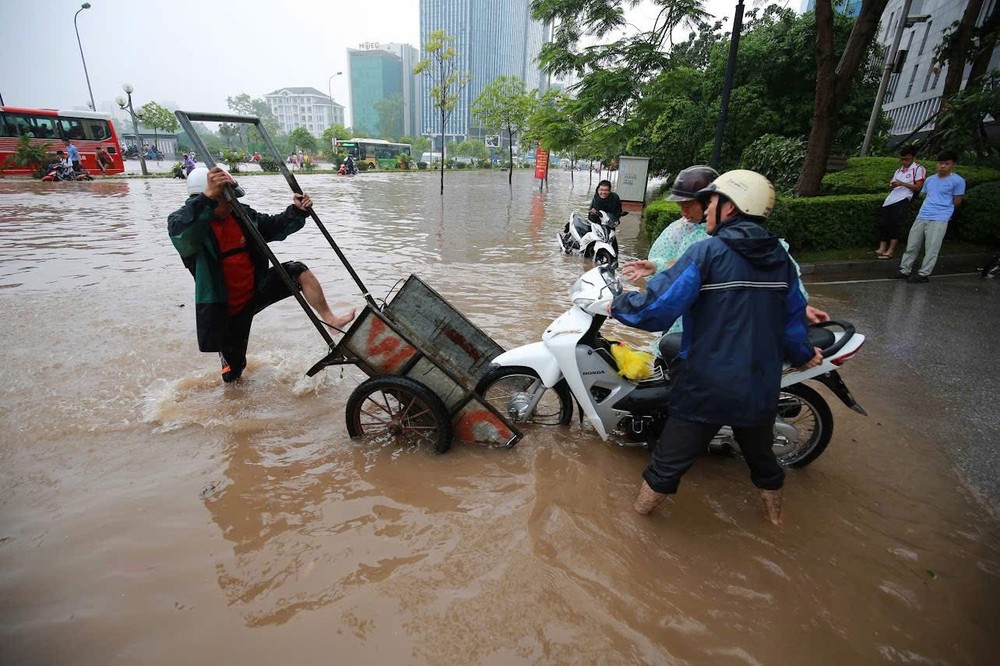
Meanwhile, Northern provinces, including Thai Nguyen, Bac Ninh, Cao Bang, Lang Son, and Quang Ninh, faced renewed flood threats as river levels rose sharply following relentless rainfall overnight. Hoa Thuong Station in Thai Nguyen recorded an extraordinary 437 millimeters of rain, while Bac Ninh’s Bo Ha Station saw more than 250 millimeters.
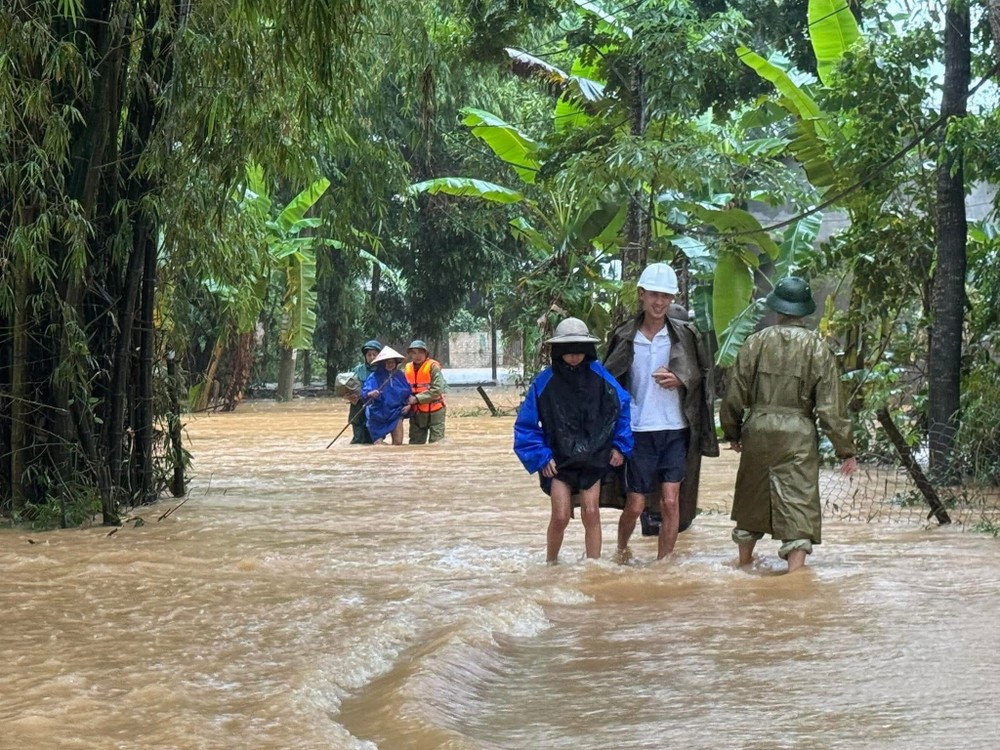
At 7 a.m. on October 7, the Cau River in Thai Nguyen reached 26.74 meters — exceeding alarm level two by 0.74 meters — while the Song Thuong in Bac Giang rose above alarm level one. Hydrologists warned that river crests could surpass alarm level three in the coming days, with the potential for “major flooding.”
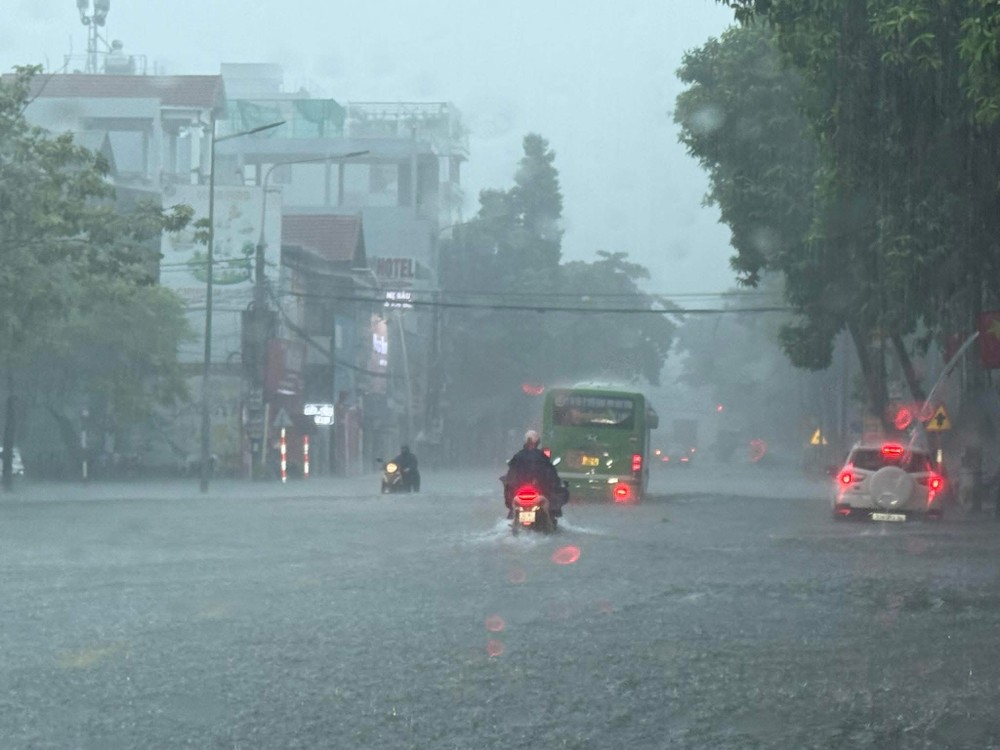
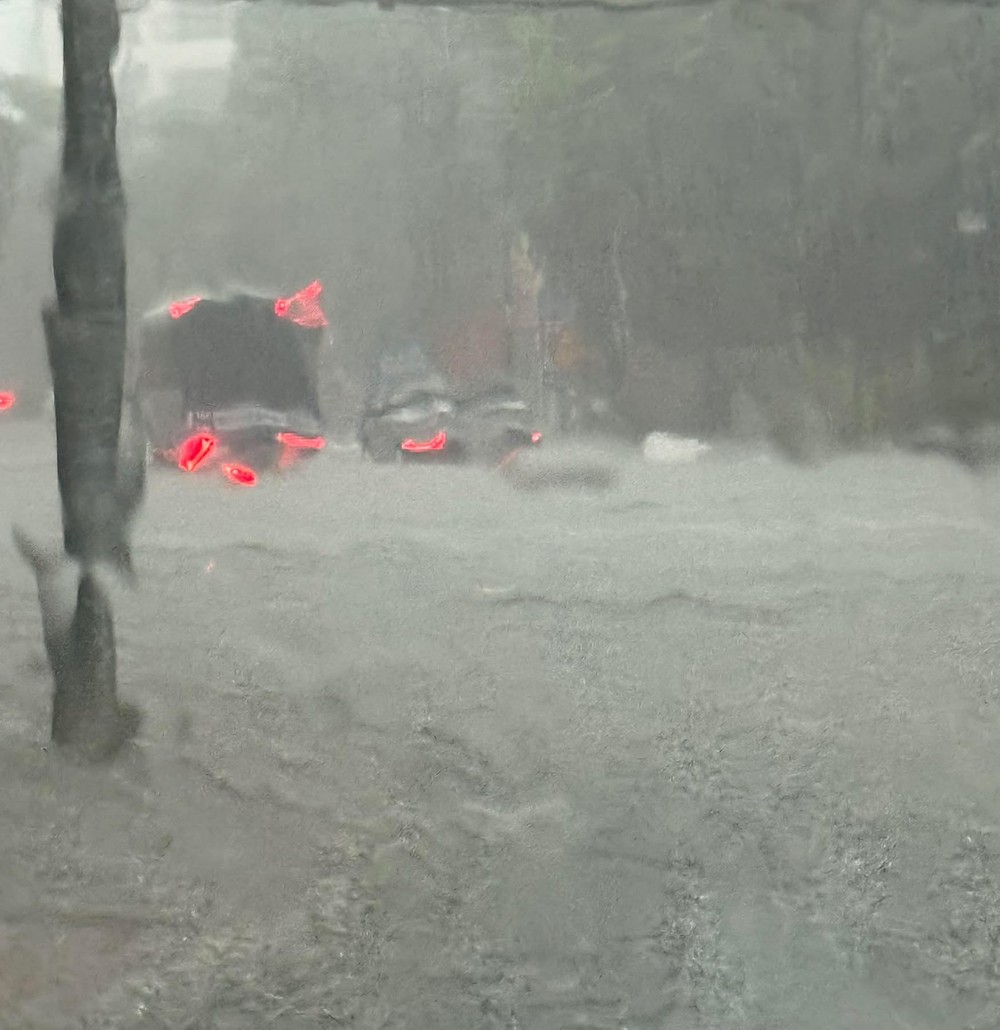
Authorities raised the disaster risk level to tier three — indicating a high likelihood of severe inundation in riverine and urban areas across Northern Vietnam, as well as flash floods and landslides in mountainous regions. Over the next 24 to 48 hours, rainfall of 60–120 millimeters, and in some places over 250 millimeters, is expected in Hanoi, Thai Nguyen, and Bac Ninh, while northern midland and mountainous provinces may receive up to 100 millimeters.
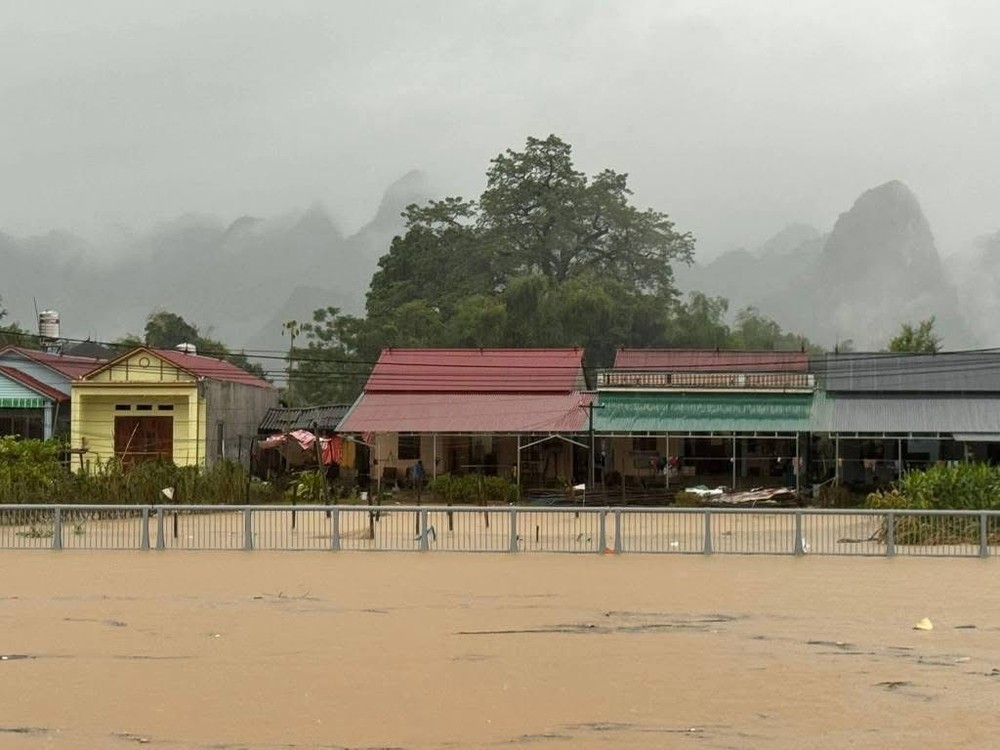
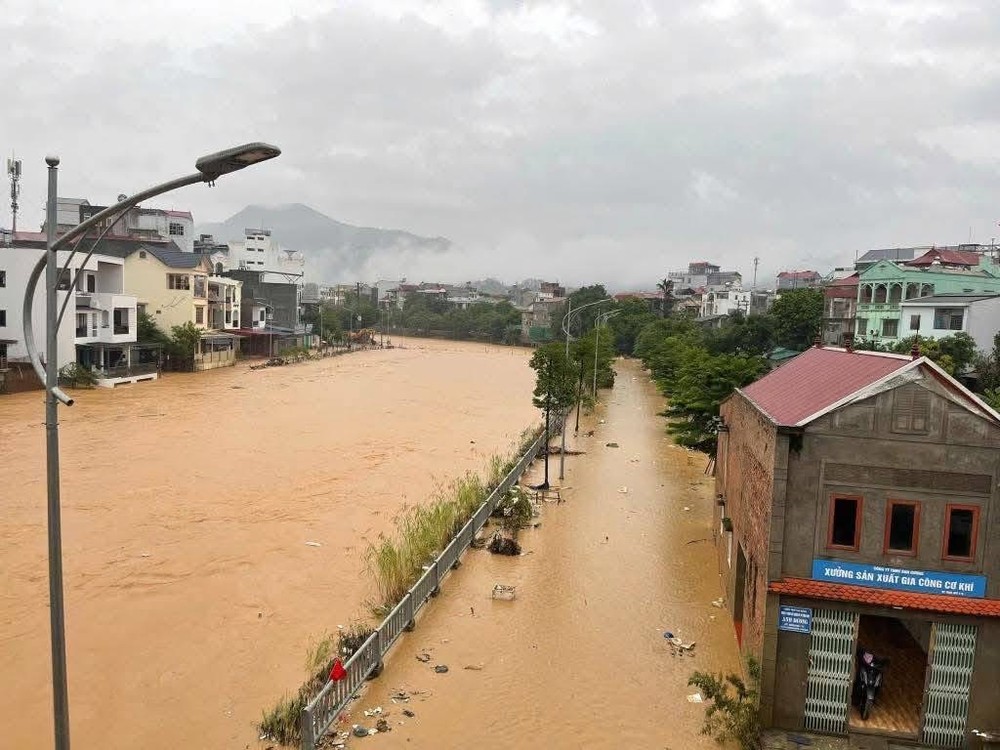
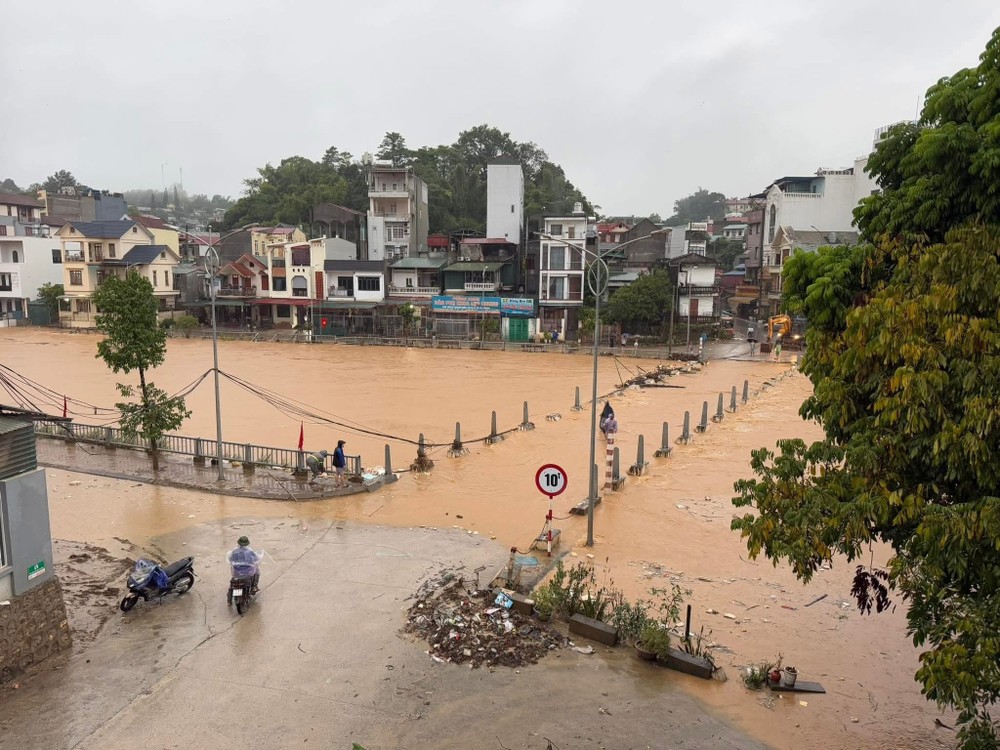
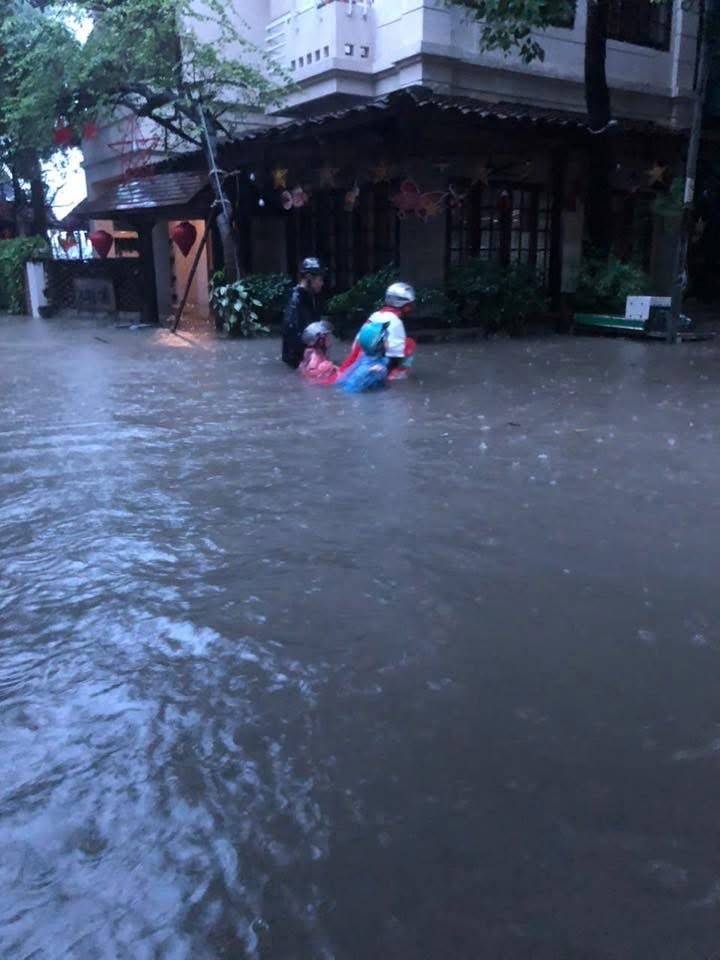
As the North braces for what may be another round of major flooding, Hanoi and neighboring localities continue efforts to ensure public safety, protect production facilities, and maintain essential operations amid the heaviest rains seen so far this month.



